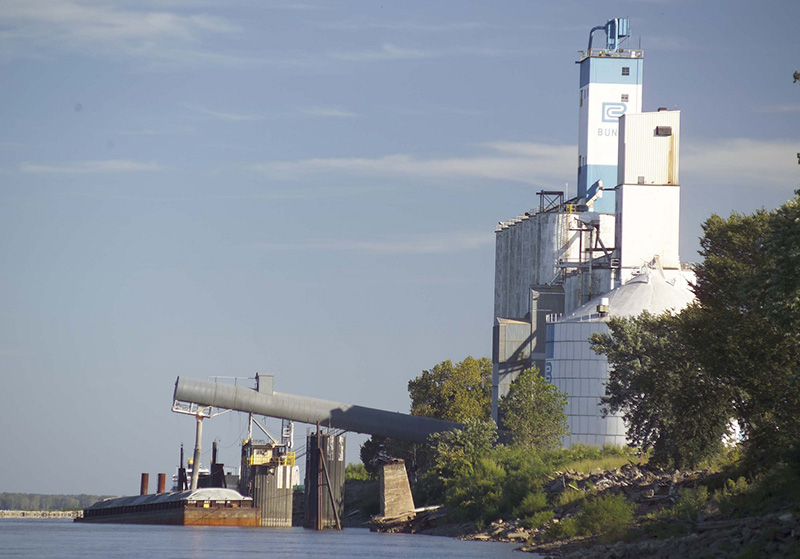Grain shipments went gangbusters in 2016, sending barges, trucks and railroads into overdrive.
Buoyed by strong export demand and relatively low freight rates, barge operators were plenty busy hauling record crops of corn and soybeans as well as large amounts of wheat. This helped them end the year on a strong note, and provided a good dose of confidence in the transportation market going into 2017.
As of Dec. 24, total grain barge tonnages in 2016 hit a whopping 42.4 million tons — 20% higher than 2015. In fact with one week remaining, the year-to-date cumulative total grain tonnage moved during 2016 is already the highest since 2003, when annual tons were 42.5 million tons, according to the USDA Agricultural Marketing Service's Grain Transportation Report. An additional 121,000 or more tons for the last week of the year would meet or exceed the 2003 totals.
Despite strong demand for barge services, "barge freight rates have been mostly below average for most of the year, indicating that a plentiful supply of barges likely moderated the rates," the report said.
It noted that St. Louis barge rates for export grain in late September peaked at $16.76 per ton, 35% lower than the five-year average for late September. Meanwhile, Minneapolis-St. Paul barge rates for export grain peaked at $36.09 per ton during late October, 16% lower than the five-year average.
On the ocean side, the report said that freight rates for shipping bulk commodities, including grain, went up during the year due to strong iron ore and grain demand, but as of mid-December, rates remained below the historical highs of 2008 because the bulk shipping market is overrun with excess vessel capacity.
The report added that all modes of shipping benefited from low diesel fuel prices during the year.
All the good news on grain movements, however, reveals a deep concern for users of the inland waterways system. Soybean farmers, among others, are worried that the nation's aging system of locks and dams will have trouble keeping pace with the explosion of agricultural production.
"Transportation infrastructure gives U.S. farmers a significant competitive advantage over our international competitors, but without investment, we won't enjoy that advantage for long," said Mark Seib, a soybean farmer from Poseyville, Ind., and director on the United Soybean Board.
"We need to focus on investing in our infrastructure now to position ourselves for a competitive and profitable future," he said in December, pointing to the results of a recently expanded study on soybean transportation.
That report — "Farm to Market: A Soybean's Journey" — predicted that barge landings of soybeans will increase 32% to more than 21,000 tons by 2023, while rail carloads will go up 20%. It said that China will continue to be the leading foreign customer, and that planned infrastructure improvements in Brazil, a chief U.S. soybean competitor, could reduce freight costs there between 20%-30% or $40 per metric ton, putting them nearly on par with U.S. inland transportation costs.
The inland waterways industry and its customers will have their hands full in the coming months explaining these finer points to a Congress that includes many new members and to a new administration that has promised infrastructure improvements.





